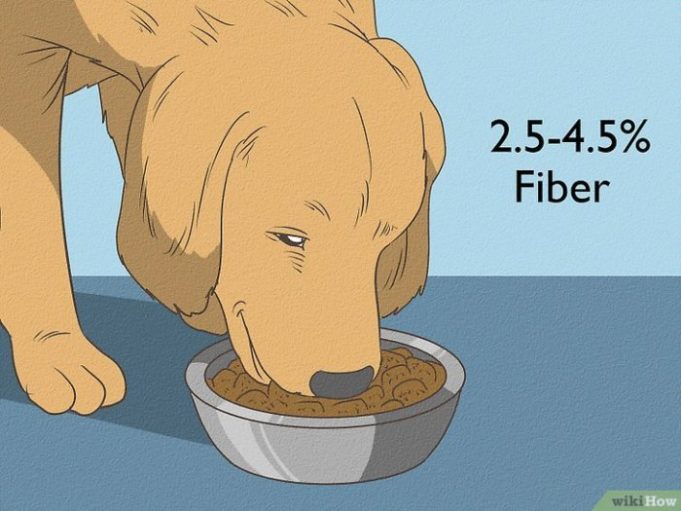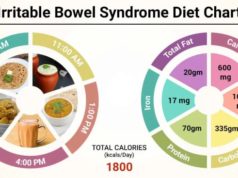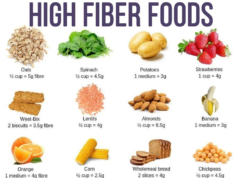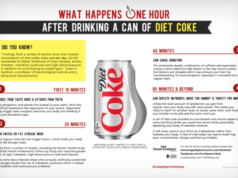How to add fiber to dogs diet naturally is a question many pet owners ask. Fiber is an essential nutrient for dogs, supporting digestive health, promoting regularity, and even contributing to weight management. Just like humans, dogs need a balanced diet, and fiber plays a crucial role in maintaining their overall well-being.
Understanding the different types of fiber, their benefits, and how to incorporate them into your dog’s meals can make a significant difference in their health. From adding fruits and vegetables to choosing fiber-rich dog food, this guide will explore natural ways to increase your furry friend’s fiber intake.
Understanding Fiber’s Importance for Dogs: How To Add Fiber To Dogs Diet Naturally
Fiber is an essential nutrient for dogs, playing a crucial role in maintaining their overall health and well-being. Just like humans, dogs need fiber to support their digestive system and promote healthy bowel movements.
Types of Fiber, How to add fiber to dogs diet naturally
Fiber is a type of carbohydrate that the body cannot digest. It is categorized into two main types: soluble and insoluble fiber. Both types are important for dogs, each playing a unique role in maintaining their health.
- Soluble Fiber: This type of fiber dissolves in water and forms a gel-like substance in the digestive tract. It helps slow down the absorption of sugars and can aid in regulating blood sugar levels. Soluble fiber is also beneficial for promoting healthy cholesterol levels and supporting a healthy gut microbiome. Common sources of soluble fiber include:
- Oatmeal
- Apples
- Carrots
- Sweet potatoes
- Insoluble Fiber: This type of fiber does not dissolve in water and passes through the digestive tract relatively unchanged. It helps add bulk to stool, promoting regular bowel movements and preventing constipation. Insoluble fiber also aids in the removal of waste products from the body. Common sources of insoluble fiber include:
- Wheat bran
- Brown rice
- Green beans
- Broccoli
Recognizing Fiber Deficiency Symptoms in Dogs
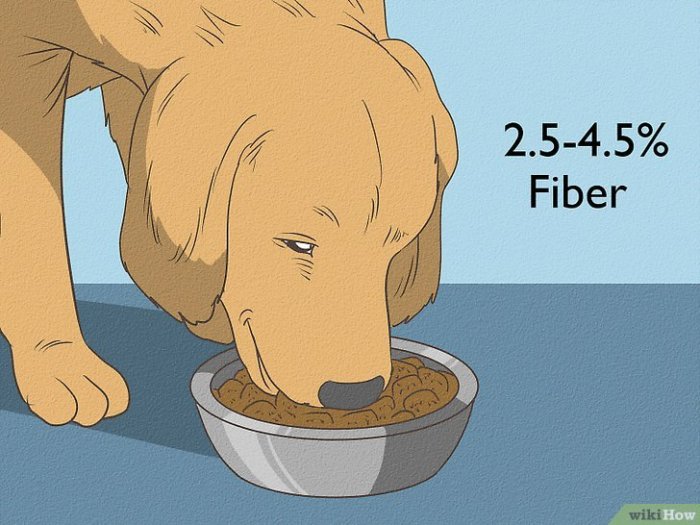
Just like humans, dogs need fiber in their diet to maintain optimal digestive health. However, sometimes dogs might not be getting enough fiber, leading to various health issues. Recognizing the signs of fiber deficiency in dogs can help you take proactive steps to address the problem and improve your furry friend’s well-being.
Signs of Fiber Deficiency in Dogs
Fiber deficiency can manifest in various ways in dogs. It’s important to pay attention to any changes in your dog’s behavior or physical condition that could indicate a lack of fiber in their diet. Here are some common signs:
- Constipation: This is a classic sign of low fiber intake. When dogs don’t get enough fiber, their stool becomes harder and less frequent, making it difficult to pass.
- Diarrhea: While constipation is more common, some dogs might experience diarrhea as a result of fiber deficiency. This happens because a lack of fiber can disrupt the balance of gut bacteria, leading to digestive upset.
- Weight Loss: Insufficient fiber intake can affect a dog’s ability to absorb nutrients, leading to weight loss. This is because fiber helps slow down digestion, allowing for better nutrient absorption.
- Gas and Bloating: A lack of fiber can disrupt the digestive process, leading to increased gas and bloating.
- Reduced Appetite: Some dogs might experience a reduced appetite due to digestive discomfort caused by low fiber intake.
Potential Health Risks of Low-Fiber Diets
While occasional bouts of constipation or gas might not be a cause for immediate concern, long-term low-fiber diets can lead to serious health issues in dogs.
- Gastrointestinal Issues: Low fiber intake can contribute to chronic constipation, diarrhea, and other digestive problems. This can lead to discomfort, pain, and even more serious conditions like megacolon, a condition where the colon becomes enlarged and loses its ability to function properly.
- Nutritional Deficiencies: Fiber plays a crucial role in nutrient absorption. Without enough fiber, dogs may not be able to absorb essential vitamins and minerals, leading to nutritional deficiencies. This can weaken their immune system and make them more susceptible to illnesses.
- Obesity: Fiber helps regulate blood sugar levels and promotes satiety, making dogs feel fuller for longer. Without enough fiber, dogs may overeat, leading to weight gain and obesity.
Fiber’s Role in Digestive Health
Fiber is an essential component of a healthy diet for dogs. It helps maintain a balanced gut microbiome, which is crucial for proper digestion and overall health.
- Promotes Regular Bowel Movements: Fiber adds bulk to the stool, making it easier to pass and preventing constipation. It also helps stimulate the muscles in the digestive tract, promoting regular bowel movements.
- Supports Gut Health: Fiber acts as a prebiotic, providing food for beneficial bacteria in the gut. These bacteria play a vital role in breaking down food, absorbing nutrients, and boosting the immune system.
- Regulates Blood Sugar Levels: Fiber slows down the absorption of sugar from food, helping to regulate blood sugar levels and prevent spikes. This is particularly important for dogs with diabetes.
Natural Ways to Increase Fiber in a Dog’s Diet
Adding fiber to your dog’s diet can be as simple as incorporating some readily available ingredients. By understanding the nutritional value of different foods, you can make informed decisions about what to feed your furry friend.
Fiber-Rich Foods and Their Nutritional Value
A well-balanced diet containing fiber-rich foods can improve your dog’s overall health and well-being. Here is a table outlining some common fiber-rich foods and their nutritional value:
| Food | Fiber Content (per 100g) | Benefits |
|---|---|---|
| Pumpkin | 3.6g | Supports digestion, aids in weight management, rich in vitamins and minerals. |
| Sweet Potato | 3.1g | Rich in antioxidants, promotes gut health, supports immune function. |
| Carrots | 2.8g | Excellent source of vitamin A, promotes eye health, aids in digestion. |
| Broccoli | 2.6g | Rich in vitamins and minerals, supports immune function, promotes gut health. |
| Green Beans | 2.5g | Low in calories, rich in fiber, supports healthy digestion. |
| Apples (without core and seeds) | 2.4g | Rich in antioxidants, promotes gut health, supports overall well-being. |
| Bananas | 2.6g | Rich in potassium, promotes healthy digestion, supports energy levels. |
Healthy Dog Treats High in Fiber
Offering healthy dog treats can be a fun way to increase fiber intake. Here are some fiber-rich options:
- Pumpkin puree treats: Pumpkin puree is a natural source of fiber and can be easily incorporated into homemade dog treats. You can combine pumpkin puree with other healthy ingredients like oats, peanut butter, and yogurt to create delicious and nutritious treats.
- Sweet potato chews: Sweet potato chews are a great source of fiber and can be purchased from pet stores or made at home. Look for chews made with natural ingredients and avoid those containing artificial flavors, colors, and preservatives.
- Carrot sticks: Carrots are a crunchy and delicious source of fiber. Offer your dog carrot sticks as a healthy snack or add them to their meals.
- Broccoli florets: Broccoli is another excellent source of fiber and can be given to dogs in moderation. Choose smaller florets that are easy for your dog to chew and avoid giving them the stem, as it can be difficult to digest.
Incorporating Fiber-Rich Vegetables into Dog Meals
Adding fiber-rich vegetables to your dog’s meals is a simple and effective way to increase their fiber intake. Here are some step-by-step instructions:
- Choose your vegetables: Select vegetables that are safe for dogs and high in fiber, such as pumpkin, sweet potato, carrots, broccoli, green beans, and apples (without core and seeds).
- Prepare the vegetables: Wash and chop the vegetables into small pieces that are easy for your dog to chew. You can steam, roast, or boil the vegetables to soften them and make them more digestible.
- Introduce gradually: Start by adding a small amount of cooked vegetables to your dog’s meal and gradually increase the amount over time. This will help your dog’s digestive system adjust to the increased fiber intake.
- Monitor your dog’s response: Pay attention to your dog’s stool consistency and overall health. If you notice any changes, such as diarrhea or constipation, reduce the amount of vegetables you are adding to their diet.
Fiber-Rich Recipes for Dogs
Adding fiber to your dog’s diet doesn’t have to be complicated. With a little creativity and some knowledge of natural fiber sources, you can easily create delicious and nutritious meals that your furry friend will love. Here are some ideas to get you started.
Homemade Dog Food Recipes with Fiber
A balanced diet for your dog should consist of protein, carbohydrates, healthy fats, and fiber. These recipes provide a good balance of these essential nutrients and can be easily customized to suit your dog’s individual needs and preferences.
- Chicken and Brown Rice with Sweet Potato
- 1 cup cooked chicken, shredded
- 1 cup cooked brown rice
- 1/2 cup cooked sweet potato, mashed
- 1/4 cup chopped carrots
- 1/4 cup chopped green beans
- 1 tablespoon olive oil
- Beef and Quinoa with Pumpkin
- 1 cup cooked ground beef
- 1 cup cooked quinoa
- 1/2 cup cooked pumpkin puree
- 1/4 cup chopped broccoli
- 1/4 cup chopped spinach
- 1 tablespoon olive oil
- Salmon and Oatmeal with Applesauce
- 1 cup cooked salmon, flaked
- 1 cup cooked oatmeal
- 1/2 cup unsweetened applesauce
- 1/4 cup chopped celery
- 1/4 cup chopped blueberries
- 1 tablespoon olive oil
Tips for Preparing Fiber-Rich Meals for Dogs
These tips will help you create palatable and appealing meals that are both nutritious and enjoyable for your dog.
- Introduce New Foods Gradually: When adding new ingredients to your dog’s diet, it’s important to do so gradually to avoid digestive upset. Start by adding a small amount of the new food to their regular meal and increase the amount over several days. Observe your dog for any signs of digestive issues like diarrhea or vomiting.
- Cook Foods Thoroughly: Ensure that all ingredients are cooked thoroughly to kill any bacteria. This is especially important for meats and vegetables.
- Avoid Toxic Foods: There are certain foods that are toxic to dogs, so it’s important to be aware of these and avoid them. Some common toxic foods for dogs include onions, garlic, grapes, and raisins.
- Use a Variety of Fiber Sources: To ensure your dog gets a wide range of nutrients, it’s best to use a variety of fiber sources in their diet. This can include fruits, vegetables, whole grains, and legumes.
- Consult Your Veterinarian: If you have any concerns about your dog’s diet, it’s always best to consult your veterinarian. They can provide personalized recommendations based on your dog’s age, breed, and health condition.
Balancing Fiber in a Dog’s Diet
To ensure your dog receives the right amount of fiber, it’s essential to understand the role of fiber in their diet and how to create a balanced meal plan.
- Fiber Needs Vary: The amount of fiber your dog needs will vary depending on their age, breed, activity level, and overall health. For example, puppies and senior dogs may need more fiber than adult dogs.
- Start Slowly: When introducing fiber-rich foods, start slowly and gradually increase the amount over time. This will give your dog’s digestive system time to adjust.
- Monitor Your Dog’s Stool: The consistency of your dog’s stool can be a good indicator of whether they are getting enough fiber. If their stool is too hard or too soft, you may need to adjust their fiber intake.
- Consider Supplements: If you are struggling to get enough fiber into your dog’s diet through food alone, you can consider using fiber supplements. These are available in a variety of forms, including powders, tablets, and chews.
Considerations for Adding Fiber to a Dog’s Diet
It’s important to remember that introducing new foods, especially those high in fiber, should be done gradually to avoid digestive upset. A sudden increase in fiber can cause discomfort and even lead to diarrhea or constipation.
Monitoring Your Dog’s Response
Monitoring your dog’s response to increased fiber intake is crucial. This involves observing their bowel movements and overall behavior. Look for changes in stool consistency, frequency, and any signs of discomfort like straining or abdominal pain.
If you notice any significant changes, consider reducing the amount of fiber you’re adding or switching to a different fiber source.
Potential for Digestive Upset and How to Address It
While fiber is beneficial for dogs, introducing it too quickly can cause digestive upset.
Here are some common symptoms of digestive upset:
- Diarrhea
- Constipation
- Gas
- Bloating
- Vomiting
- Loss of appetite
If your dog experiences digestive upset, it’s best to consult with your veterinarian. They can help determine the cause and recommend appropriate treatment.
Consulting with a Veterinarian
While adding fiber to your dog’s diet can be beneficial, it’s crucial to consult with your veterinarian before making any significant dietary changes. This is especially important if your dog has any underlying health conditions or is already on medication.
A veterinarian can help you assess your dog’s individual needs and recommend the appropriate amount of fiber for their specific situation. They can also help you identify the best sources of fiber for your dog, considering their age, breed, and health status.
Determining Appropriate Fiber Levels
Your veterinarian will play a key role in determining the appropriate fiber levels for your dog. This is because fiber requirements vary depending on several factors, including:
- Age: Puppies and senior dogs may have different fiber needs than adult dogs.
- Breed: Some breeds are prone to digestive issues, and their fiber requirements may be higher.
- Activity Level: More active dogs may require more fiber to support their energy needs.
- Health Conditions: Certain health conditions, such as obesity, diabetes, and gastrointestinal issues, may require specific fiber recommendations.
Your veterinarian will consider these factors and perform a thorough physical examination to determine the optimal fiber intake for your dog.
Identifying Suitable Fiber Sources
Your veterinarian can guide you on choosing suitable fiber sources for your dog. They can recommend specific foods and supplements that are appropriate for your dog’s individual needs and preferences.
- Commercial Dog Food: Many commercial dog foods contain varying levels of fiber. Your veterinarian can help you select a food that meets your dog’s fiber requirements and overall nutritional needs.
- Fiber Supplements: In some cases, your veterinarian may recommend fiber supplements to help your dog reach their target fiber intake. These supplements come in various forms, including powders, capsules, and chews.
- Natural Sources: Your veterinarian can also suggest natural sources of fiber, such as fruits, vegetables, and whole grains, that can be incorporated into your dog’s diet. However, it’s important to ensure these foods are safe and appropriate for dogs and are introduced gradually to avoid digestive upset.
It’s essential to remember that not all fiber sources are created equal. Some fibers are more easily digestible than others, and some may have different effects on your dog’s digestive system. Your veterinarian can help you choose the best fiber sources for your dog’s individual needs.
Ending Remarks
Adding fiber to your dog’s diet naturally can be a simple yet impactful step in improving their health. By understanding the benefits of fiber, recognizing signs of deficiency, and incorporating fiber-rich foods into their meals, you can ensure your dog enjoys optimal digestive health and overall well-being. Remember, consulting with your veterinarian is crucial before making any significant dietary changes. They can help determine the best sources of fiber for your dog’s specific needs and guide you towards a balanced and nutritious diet.
Question & Answer Hub
What are some common fiber-rich fruits and vegetables I can give my dog?
Some safe and nutritious options include apples, bananas, blueberries, carrots, green beans, and sweet potatoes. Always introduce new foods gradually and in moderation, and make sure to remove seeds and pits.
Can I just add fiber supplements to my dog’s food?
While supplements can be helpful, it’s best to consult with your veterinarian to determine if they are necessary and appropriate for your dog. They can help you choose the right type and dosage.
How much fiber should my dog be eating?
The ideal fiber intake varies depending on your dog’s size, breed, and activity level. Your veterinarian can provide personalized recommendations based on your dog’s individual needs.
What if my dog has digestive issues after adding fiber to their diet?
It’s normal for some dogs to experience mild digestive upset when introducing new foods. Start with small amounts and gradually increase the quantity. If your dog continues to have issues, consult your veterinarian.
Adding fiber to your dog’s diet naturally is a great way to promote healthy digestion. You can incorporate fiber-rich foods like pumpkin, sweet potatoes, and apples into their meals. But first, let’s define what we mean by “diet,” as it goes beyond just the food we eat.
You can learn more about the definition of “diet” here. Once you understand the broader concept of diet, you can make informed choices about how to best incorporate fiber into your dog’s daily routine.
Adding fiber to your dog’s diet naturally can be as simple as incorporating more fruits and vegetables. You might be wondering if something like diet soda, often touted for weight loss, can also be beneficial for dogs. However, it’s important to remember that is diet coke good for weight loss for humans, but not for dogs.
Instead, stick to healthy, fiber-rich options like pumpkin, carrots, and green beans to keep your furry friend happy and healthy.
Adding fiber to your dog’s diet naturally can be as simple as incorporating fruits and vegetables into their meals. If you’re on a tight budget, you can find inspiration for healthy, affordable meal options in a cheap diet plan and apply those principles to your dog’s food.
Remember, a balanced diet with sufficient fiber can help keep your furry friend happy and healthy!















